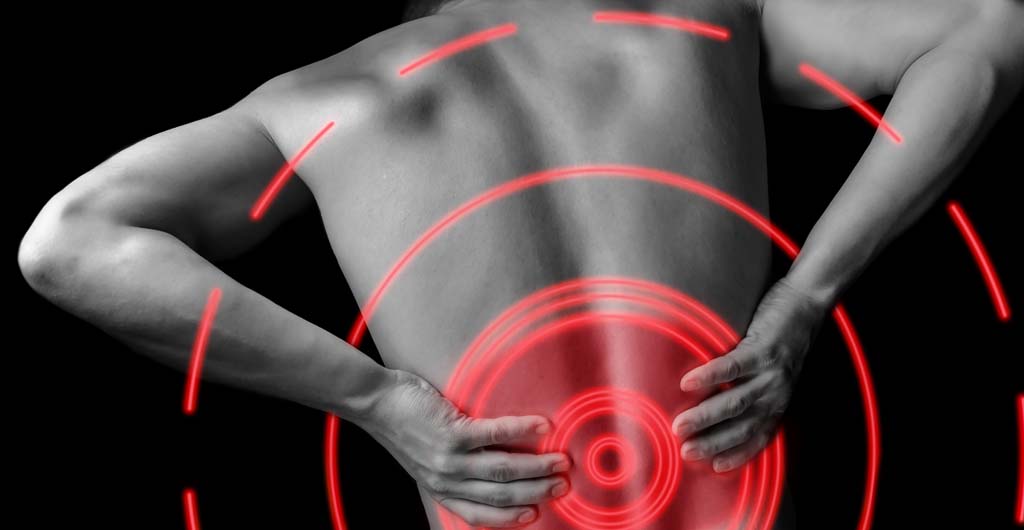A very large percentage of the population will suffer from back pain at least once in their lifetime. Back pain can range from mildly annoying to severely debilitating and is, in many cases, also avoidable. If you suffer back pain, make sure you seek medical advice and treatment however, if you want to avoid back pain in the first place, follow the advice in this article…
Sort out your posture
Posture refers to the alignment of your joints – especially your spine. Your spine has several curves that help absorb shock and dissipate stress and if any of these curves increase or decrease beyond the norm, your spine is exposed to more stress than it is capable of supporting and back pain can be the result. Becoming more posturally aware goes a long way to preventing back pain so make sure you sit and stand up straight and seek advice on how to develop better posture.
Lose weight
Strapping a 10kg weight to your front just for fun might sound ridiculous but that’s exactly what lots of overweight people do. And what has to work extra hard to support that weight? Yep – your lower back. Abdominal fat adversely affects posture while placing an inordinate load on the lower back which is a combination for severe and very avoidable back pain. Losing weight can have a profound effect on lower back pain and health generally so maybe today is the day to start your diet and exercise routine?
Sit less, stand more
Sitting down for prolonged periods of time is arguably the worst thing you can do for your lower back. Sitting down plays havoc with your posture, shortens the muscles in the front of your hips and abdomen and deactivates your deep core muscles – the ones that help support your spine from within. Many of us spend eight or more hours sat down and this is a major cause of back pain. Consider investing in a standing work station and also try to break up long periods of sitting with brief walks or even just standing up whenever you get the chance. Finally, make sure your workstation is set up properly to minimize workplace-related back pain.
Learn to lift properly
Lifting heavy objects is a safe and even healthy activity providing your do it properly. Too many people make the mistake of trying to lift things with their lower back and arms when, in fact, the safest way to lift anything, heavy or otherwise, is by using your legs. Your legs are obviously much stronger than your arms so it really pays to use them for lifting. Whenever you lift anything heavy, make sure you keep your chest up and your lower back slightly arched. Keep the object close to you to reduce leverage on your back and be prepared to ask for assistance if the object is too heavy to lift safely on your own.

Hydrate
Your spine is made up from 33 vertebrae, many of which are separated by intervertebral discs which are liquid-filled cushions that absorb shock and control how much movement is available at each buy herbal ambien joint. Ideally, these discs should be well-hydrated and plump to maximize their shock absorbing abilities and ensure that the space between the vertebrae is optimal. However, dehydration can reduce this space and that can lead to otherwise avoidable back pain. Make sure you drink at least one to two litres of water a day to maintain hydration levels. Interestingly, a large percentage of back pain is in fact kidney pain caused by dehydration so there’s another back-related reason to drink plenty of water.
Strengthen your core
Core is the common term for the muscles that surround and support your spine. These muscles act like an old-fashioned corset or weight training belt as they squeeze in to produce something called intra-abdominal pressure which bolsters your spine from within. Like any muscles, the core responds to exercise by getting stronger and as a strong core is inextricably linked to a reduction in back pain, it pays to keep these muscles in good shape. Forget crunches and sit-ups for core strength and reduced back pain – they can actually cause more problems than they fix. Instead, focus on things like planks, Pallof presses, dead bugs, horse stance or bird dog’s and other exercises that promote optimal posture during exercise.
Stretch and mobilize
Tight abs, hamstrings and hip flexors can have a very detrimental effect on your lower back as they can pull your pelvis out of proper alignment and destroy your lumbar curve. Additionally, long periods of inactivity can de-activate your core and cause your whole spine to stiffen up. To prevent these sorts of problems, make sure you stretch your hamstrings, abs and hip flexors often and mobilize your spine whenever you feel you have been in the same position for too long. One effective way to mobilize your spine is to adopt the all-fours position on your hands and knees and alternately hump and hollow your back. This will help increase blood flow around the area of your lower back and also prevent stiffening up. Also learn about the benefits of foam rolling and find a great masseuse who can get into certain areas of muscles that can release and relieve tight spots.

Some back pain issues are all but unavoidable – say you suffer a fall or are involved in a car accident for example. However, keeping your core strong and otherwise looking after your spine can go a very long way to reducing your incidence of otherwise avoidable back pain. Back pain can make sitting, standing, walking and even lying down very uncomfortable so look after yourself to avoid debilitating back pain.
Share this:
Click to share on Twitter (Opens in new window)
Click to share on Facebook (Opens in new window)
Click to share on Google+ (Opens in new window)

AUTHOR
Hi, my name is Dinny Morris. I’m a personal trainer and in sunny Sydney, Australia.
I work with men and women at all levels of their physical development, from overweight couch potatoes who want to get in shape, to professional athletes and natural bodybuilders who want to beef up strength and body mass.

Hi, my name is Dinny Morris. I’m a personal trainer and in sunny Sydney, Australia.
I work with men and women at all levels of their physical development, from overweight couch potatoes who want to get in shape, to professional athletes and natural bodybuilders who want to beef up strength and body mass.

